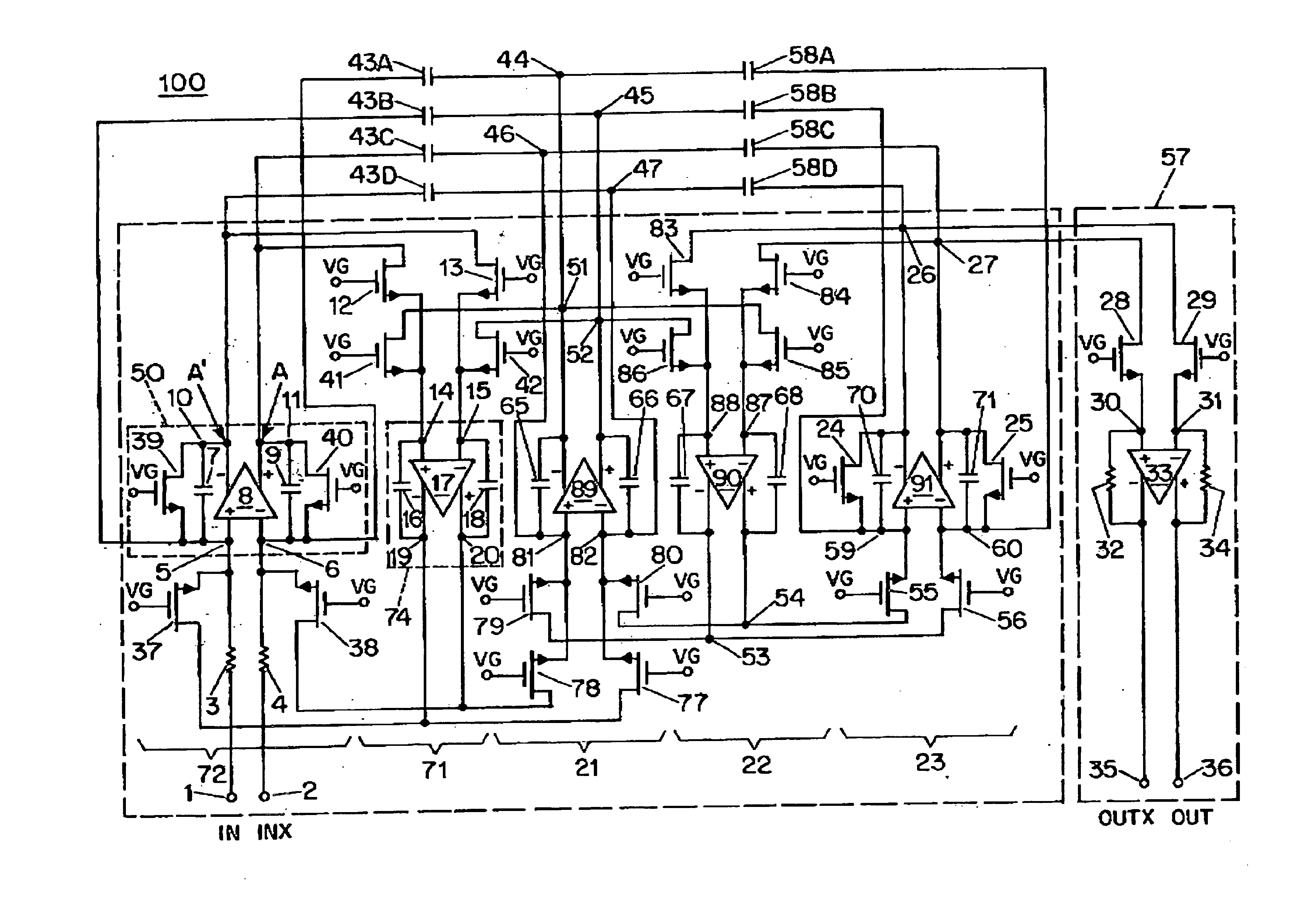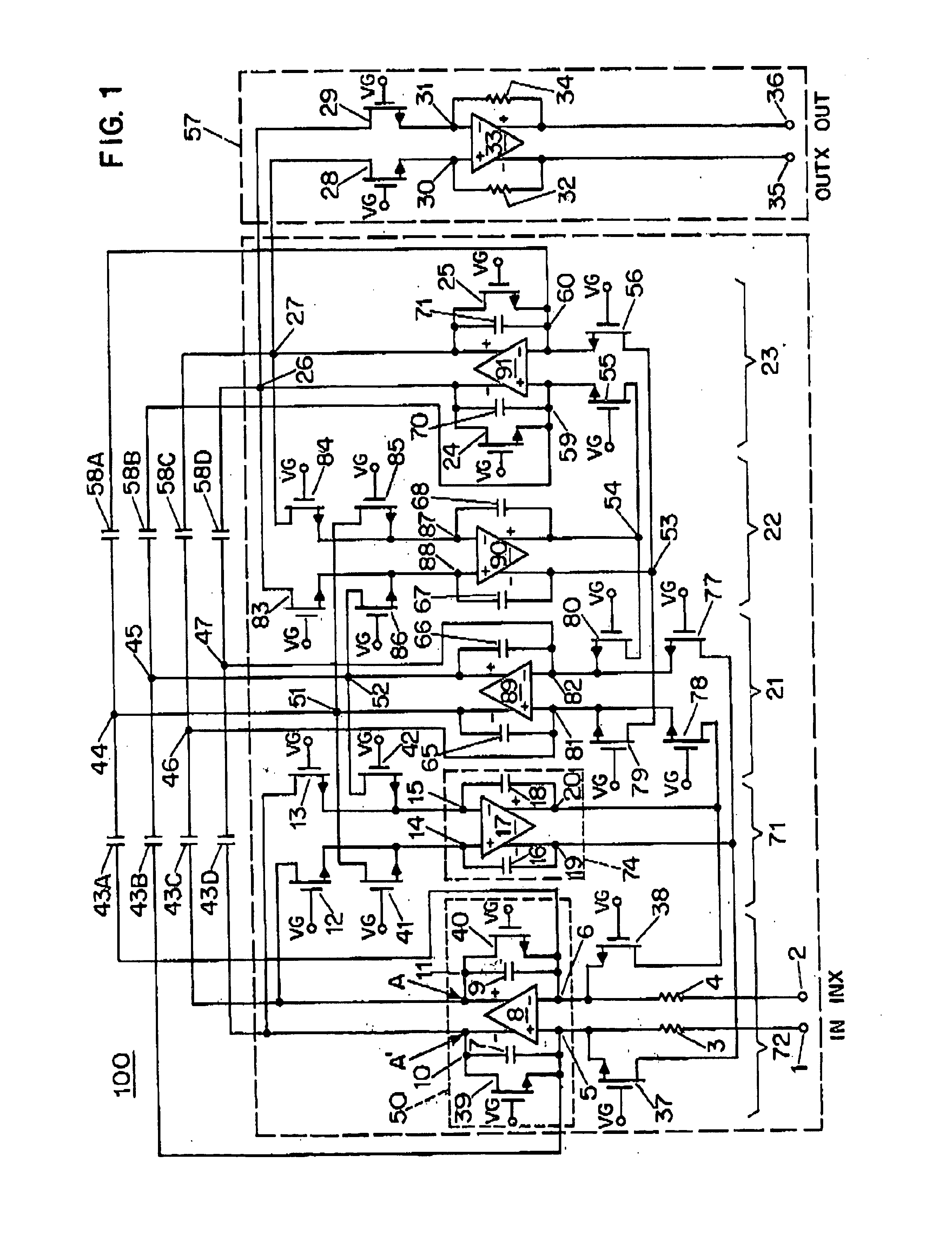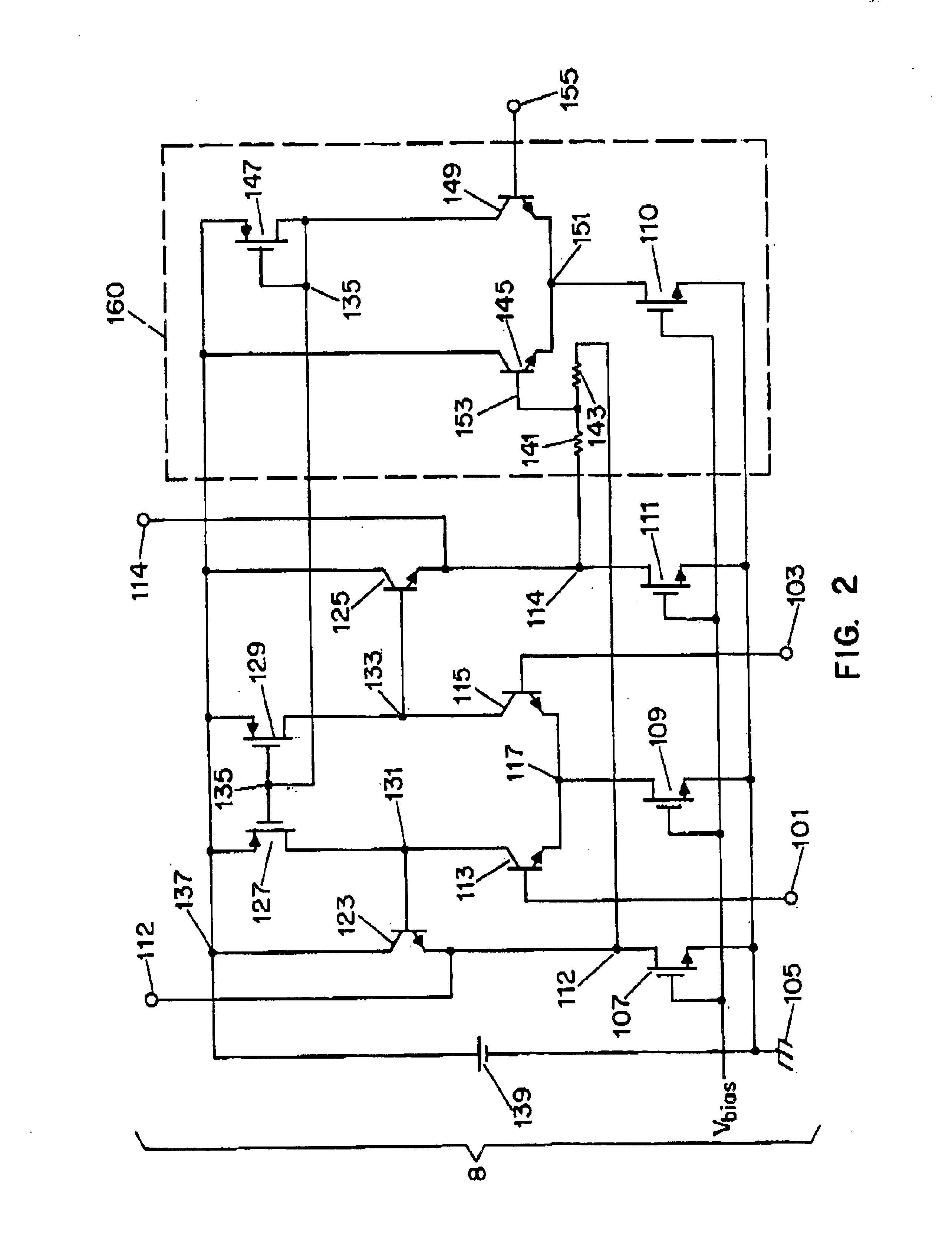Active continuous-time filter with increased dynamic range in the presence of blocker signals
a continuous-time filter and dynamic range technology, applied in pulse manipulation, frequency selective two-port network, pulse technique, etc., can solve the problems of unsatisfactory signals, unsatisfactory signals, and unsatisfactory signals, so as to achieve the effect of not exceeding the power dissipation or chip area
- Summary
- Abstract
- Description
- Claims
- Application Information
AI Technical Summary
Benefits of technology
Problems solved by technology
Method used
Image
Examples
Embodiment Construction
In FIG. 1 an exemplary embodiment of a low-pass filter in accordance with the invention for a direct conversion or zero intermediate frequency receiver is illustrated. The embodiment described has a cut-off frequency of 1.92 MHz, in-band gain of 8.5 dB and out-of-band reaction at 10 MHz of 64 dB.
In operation, fully balanced input signals are applied at input terminals 1 and 2 of the filter. For purposes of this specification and claims, fully balanced means the signals at each input terminal of a circuit are identical in magnitude to one another except have opposite polarity (i.e. the signals are 180° out of phase with respect to one another), and the signals at each output terminal of the circuit are identical to one another except have opposite polarity. The input signals pass through first fully balanced integrator 72 which consists of linear (e.g. fixed value) resistors 3 and 4, fully differential amplifier 8, linear capacitors 7 and 9, variable resistors 37, 38, 39 and 40. Full...
PUM
 Login to View More
Login to View More Abstract
Description
Claims
Application Information
 Login to View More
Login to View More - R&D
- Intellectual Property
- Life Sciences
- Materials
- Tech Scout
- Unparalleled Data Quality
- Higher Quality Content
- 60% Fewer Hallucinations
Browse by: Latest US Patents, China's latest patents, Technical Efficacy Thesaurus, Application Domain, Technology Topic, Popular Technical Reports.
© 2025 PatSnap. All rights reserved.Legal|Privacy policy|Modern Slavery Act Transparency Statement|Sitemap|About US| Contact US: help@patsnap.com



